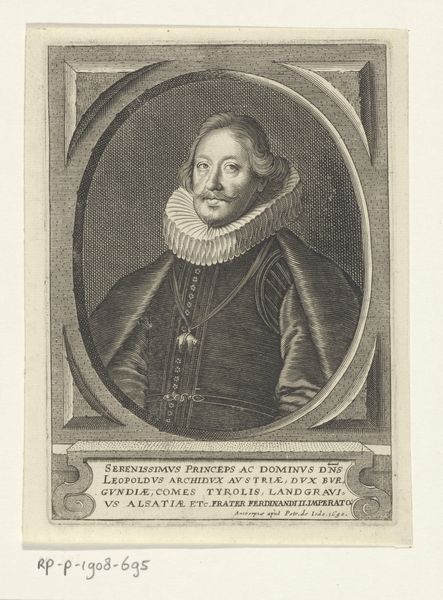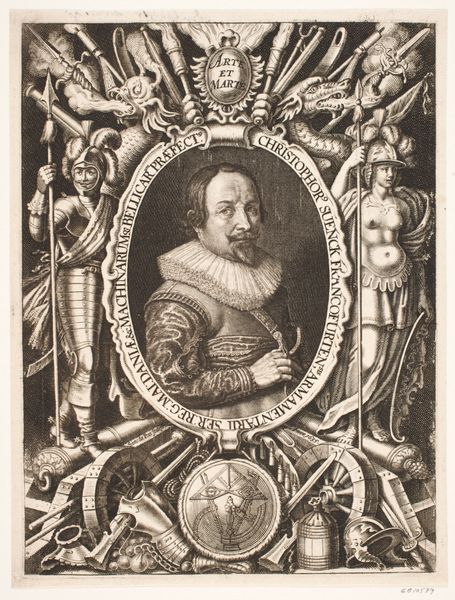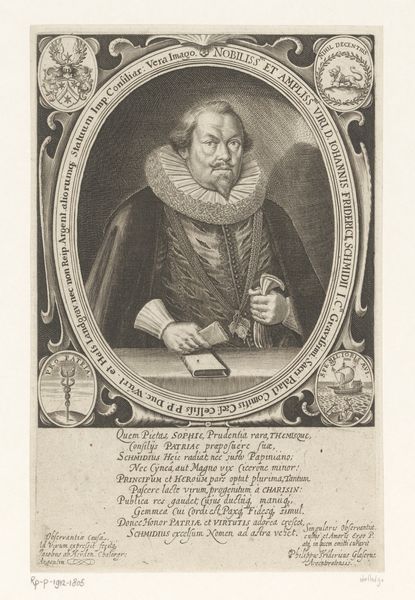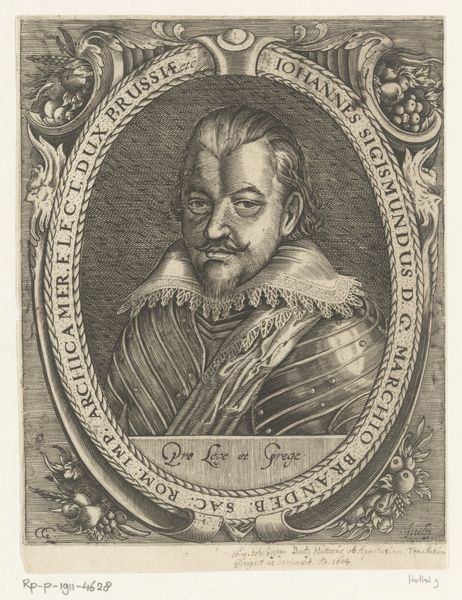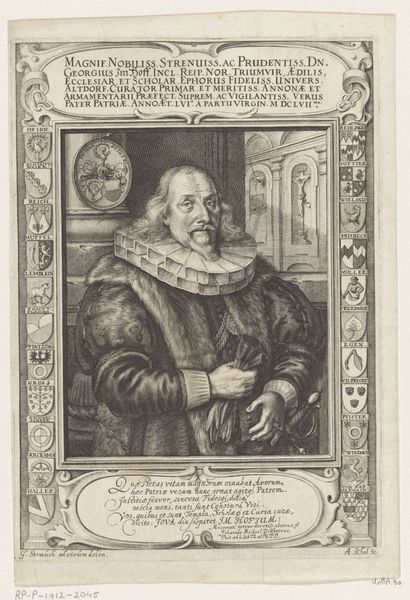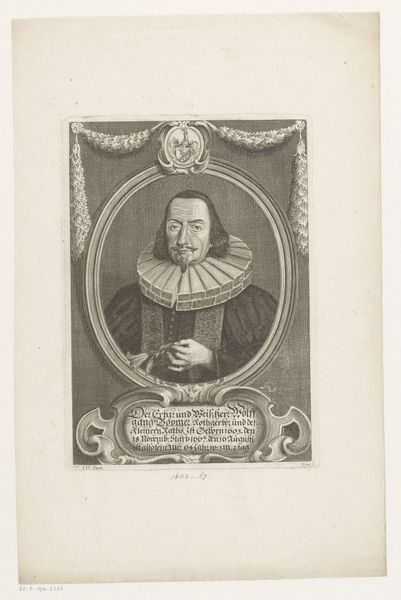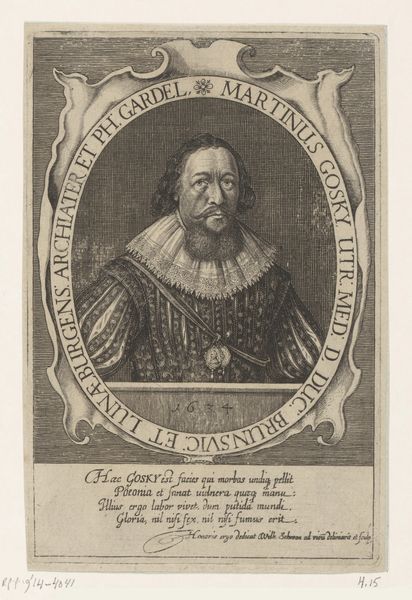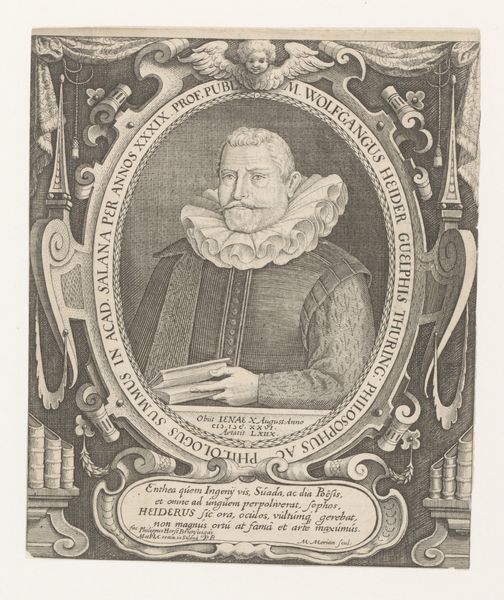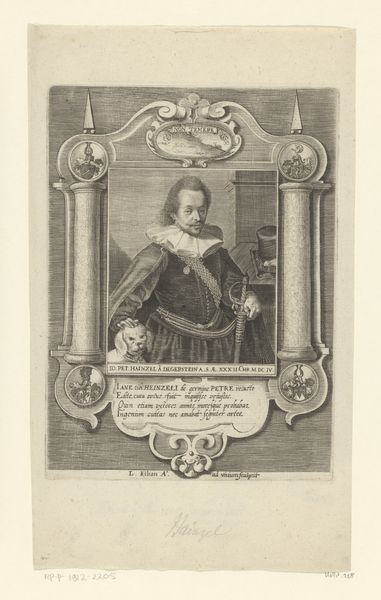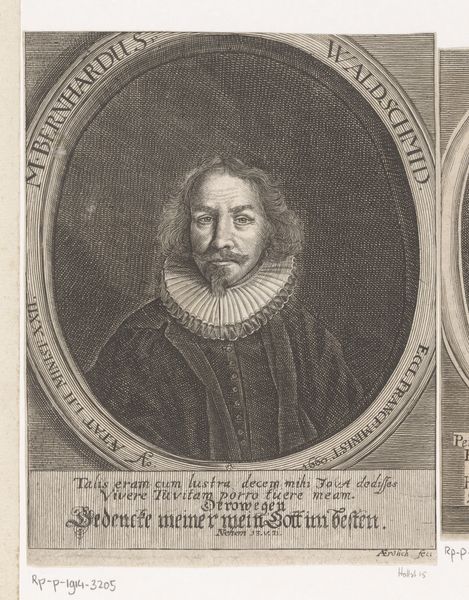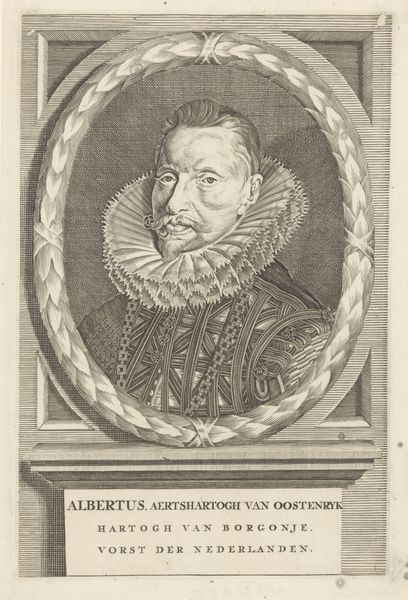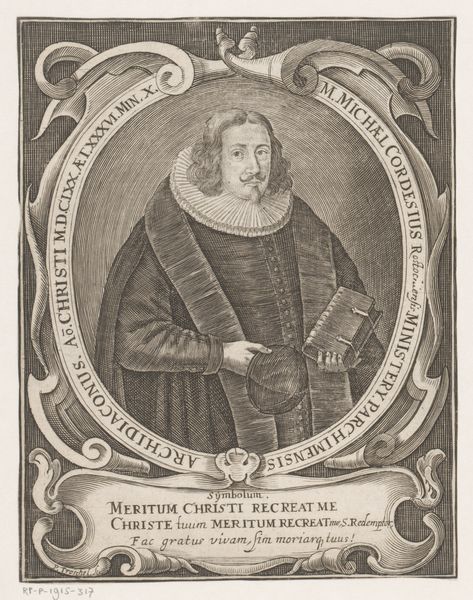
print, etching, engraving
#
portrait
#
baroque
# print
#
etching
#
old engraving style
#
history-painting
#
engraving
Dimensions: height 215 mm, width 145 mm
Copyright: Rijks Museum: Open Domain
Editor: Here we have Lucas Kilian's "Portret van Leopold V, aartshertog van Oostenrijk" from 1629. It’s an engraving, and the level of detail is quite striking. I am wondering what this piece tells us beyond the depiction of Leopold. Curator: Given the materiality of the print – its very reproducibility – this work offers a fascinating window into the dissemination of power and image-making in the 17th century. Consider the labor involved: the engraver's skill, the production of paper and ink, the mechanics of the printing press. Editor: Yes, that’s very different than if it were just a painted portrait, shown once to only a few viewers! How did these prints function in society at the time? Curator: Precisely. Prints like these facilitated the distribution of Leopold's image, thereby crafting and controlling his public persona. Look at the text included around the portrait. Whose voice does this text amplify? Think of printmaking, etching, engraving as a form of early mass media, where the elite control narratives via artisans and workshops. Editor: It sounds like the print becomes a sort of tool for spreading propaganda! So, it’s not just about aesthetics, but also about the labor of production and the strategic use of images. Curator: Absolutely! And notice how the style imitates a classical portrait; the Baroque style adds a layer of grandeur, yes, but it's also carefully constructed through skilled labor and expensive materials like quality paper and ink, impacting its perceived value. Think about how this challenges our understanding of “high art” when considering the modes of production and consumption. Editor: This completely reframes how I see the portrait. I now understand it beyond the subject himself. I see the context and implications of its materiality and the choices in labor and materials. Curator: Exactly, by focusing on those aspects, we can unravel deeper meanings about power, representation, and the circulation of images in early modern Europe.
Comments
No comments
Be the first to comment and join the conversation on the ultimate creative platform.
